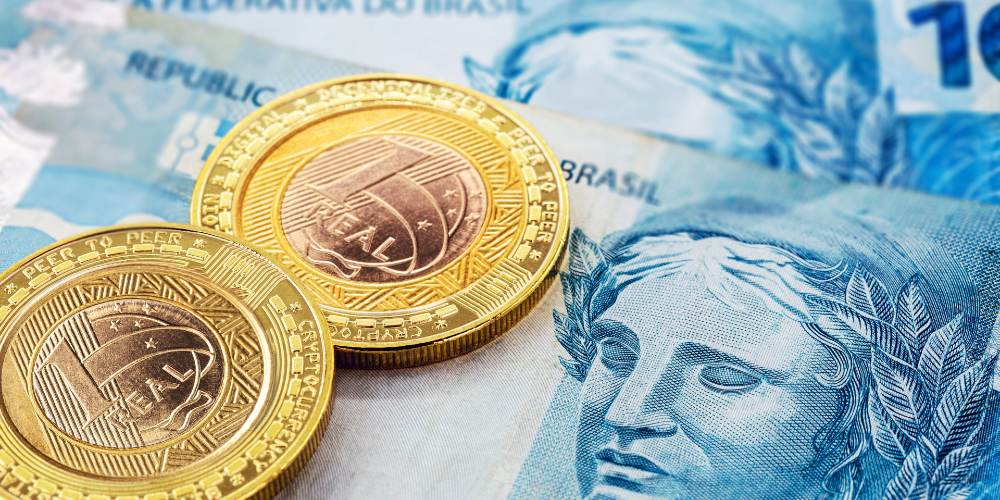(The Epoch Times)—It is not only consumers rushing to the local Costco and neighborhood metals dealer to wipe out their inventories of gold bars and coins.
Since the global financial crisis of 2008–09, central banks have been significant gold buyers, and their investments are paying off. These institutions are striking gold as prices have notched more than two dozen record settlements this year.
The metal has rallied about 30 percent in 2024, rising to as high as $2,708 per ounce. Its sister metal commodity, silver, has also performed well so far this year, surging 32 percent, to $32 an ounce.
Precious metal prices have rocketed on several factors.
Over the last 12 months, the U.S. Dollar Index (DXY), a gauge of the greenback against a basket of currencies, has slumped 3.5 percent. A weaker buck is good for dollar-denominated commodities because it makes it cheaper for foreign investors to purchase.
Despite its recent uptick, the benchmark 10-year Treasury yield has weakened by a full percent since November 2023 on Federal Reserve policy expectations. This has diminished the opportunity cost of holding non-yielding bullion.
Financial markets have witnessed an invasion of gold bugs, bulls that have ushered in precious metal euphoria to the trading floor of the New York Stock Exchange.
But central banks have ostensibly been ahead of the pack.
According to data compiled by the World Gold Council, central banks acquired 1,037 tons of gold last year, the second-highest annual purchase in history. This came one year after the institutions purchased a record high of 1,082 tons.
In August, central banks reported net purchases of eight tons, led by the National Bank of Poland, the Central Bank of the Republic of Turkey, and the Reserve Bank of Turkey.
But while central-bank purchases have significantly increased over the last three years, this has been a long-term trend, says Joseph Cavatoni, a senior market strategist at the World Gold Council.
“It’s a 14-year trend that’s basically been playing out since the global financial crisis,” Cavatoni told The Epoch Times.
“[There] has been a real desire to diversify their holdings and add the component of gold to the portfolio to achieve a better performance outcome.”
Though purchasing sizes have slowed recently, central banks anticipate adding more gold to their reserves in the coming years.
A 2024 World Gold Council survey showed that 81 percent of central banks will increase their gold holdings over the next 12 months. Looking ahead to the next five years, 66 percent of central banks think gold’s share of their overall reserves will be “moderately higher.”
In today’s “increasingly uncertain global economic environment,” the trends make sense, says Matthew Jones, a precious metals analyst at Solomon Global.
“Central banks are increasing their gold purchases as a strategy to diversify reserves, hedge against inflation, protect themselves from geopolitical risks, and reduce reliance on the U.S. dollar,” Jones told The Epoch Times. “Gold’s historical role as a stable and universally accepted asset makes it an attractive option, especially in an increasingly uncertain global economic environment.”
The U.S. dollar hegemony might play a vital role in central banks’ ferocious gold appetite.
Gold in a Reforming Global Monetary Order
Changes to the international monetary order have been unfolding, with central banks gradually transitioning away from the U.S. dollar.
According to the International Monetary Fund’s Currency Composition of Official Foreign Exchange Reserves data, the U.S. dollar share of worldwide foreign-exchange reserves is 58 percent, down from 72 percent in 2000.
“Recent data from the IMF’s Currency Composition of Official Foreign Exchange Reserves (COFER) point to an ongoing gradual decline in the dollar’s share of allocated foreign reserves of central banks and governments,” IMF officials said in a report this past summer. “Strikingly, the reduced role of the U.S. dollar over the last two decades has not been matched by increases in the shares of the other ‘big four’ currencies—the euro, yen, and pound.”
Like gold-buying, the de-dollarization campaign has been ongoing since the Great Recession, kicking into overdrive after the outbreak of the war in Ukraine. This initiative involves countries trimming their reliance on the greenback as a reserve currency.
Leaders have been responding to the potential dollar weaponization, says Vijay Singh, the managing partner and chief investment officer at Regal Point Capital.
After the postwar Bretton Woods conference, the U.S. dollar essentially became the world reserve currency, pegging every other currency to the buck. As a result, the federal government has exploited the U.S. dollar as a tool to bolster Washington’s foreign policy, which was on full display after Russia’s invasion of Ukraine.
The U.S.-led Western alliance froze about half of the Russian central bank’s more than $600 billion in assets. It limited the Kremlin’s access to the SWIFT (Society for Worldwide Interbank Financial Telecommunications) payment system, the financial artery for financial communication.
JPMorgan Chase CEO Jamie Dimon warned that cutting Russia out of SWIFT would trigger “unintended consequences.”
“I don’t think anybody likes to be bullied,” Singh told The Epoch Times. “If you look at a lot of our foreign policy, it does involve kind of using the dollar strength globally against countries that they’re not going to forget.”
Singh says several formal efforts are underway to sidestep the U.S. dollar, including expanding the coalition of anti-dollar developing nations known as the BRICS (Brazil, Russia, India, China, and South Africa).
In August 2023, the group officially invited six other nations to join the bloc: Argentina, Egypt, Ethiopia, Iran, Saudi Arabia, and the United Arab Emirates (UAE), though Saudi Arabia has still yet to join. Nineteen other countries have expressed interest in becoming members.
“We value the interest of other countries in building a partnership with BRICS,” South African President Cyril Ramaphosa said in a statement. “We have tasked our foreign ministers to further develop the BRICS partner country model and a list of prospective partner countries and report by the next Summit.”
A part of the organization’s objective is to bolster bilateral trade settled in local currencies, such as the Chinese yuan, the Brazilian real, and the Indian rupee.
In the last year, many media reports have shown that countries are creating arrangements to complete bilateral trade in local currencies.
Iran and Russia finalized an agreement in December to trade in their local currencies rather than the U.S. dollar, according to Tehran’s state media. Russian Deputy Prime Minister Alexei Overchuk confirmed this past spring that 92 percent of trade settlements between Moscow and Beijing are conducted in rubles and yuan. India and Indonesia inked a deal in March to trade in local currencies.
Over the years, rampant speculation has been that BRICS members would establish a gold-backed reserve currency. To date, nothing has materialized, and experts are skeptical that it will happen anytime soon.
While discussions are likely occurring, “it’s really not a quick” fix to displace the U.S. dollar, according to Cavatoni.
“It’s quite a bit of work to get that done,” he said.
“I think there’s still the necessity for dollars to be in the middle of the mix, and there’s not a lot of viable alternatives to start a new currency, to get something that’s completely independent, to have it embedded in clearing and have it embedded in trade settlements.”
While gold is a politically acceptable instrument to nations outside the Western alliance, there are broader challenges, say State Street economists.
“Gold reserves are simply not ‘user-friendly’ in large quantities,” they wrote in a paper. “Gold needs to be stored domestically and requires an international transaction to convert it into foreign currency for payment purposes.”
“In brief,” they concluded, “gold performs well on safety but falls short on liquidity.”
A more realistic proposal would be tying gold to a stablecoin, Vingh says. This would consist of a cryptocurrency in which the digital asset’s value is pegged to a reference asset, such as the U.S. dollar or gold.
“I think that’s actually more workable, and what they might do,” he stated. “There’s so much flexibility involved with these stablecoins, theoretically.”
The next BRICS Summit later this month will take place in Kazan, Russia, and might rekindle murmurs about de-dollarization and a gold-backed currency.
Gold Prices in 2025
Will gold extend its record run into 2025? Financial experts agree that worldwide markets should brace for elevated prices.
Goldman Sachs Research forecasters prognosticate that gold should hover around $2,700 by early next year, “buoyed by interest rate cuts by the Federal Reserve and gold purchases by emerging market central banks.”
“The metal could get an additional boost if the U.S. imposes new financial sanctions or if concerns mount about the U.S. debt burden,” they said.
“Gold is our strategists’ preferred near-term long (the commodity they most expect to go up in the short term), and it’s also their preferred hedge against geopolitical and financial risks.”
Jones believes gold investors will “enjoy this current bull” entering 2025 and target a spot value approaching $2,800 in early 2025.
Supporting factors will be the same as they have been over the last couple of years.
“I think we will enjoy this current bull run as we enter into 2025 driven by: continued demand from central banks (in particular the central banks from the BRICS nations as they reduce their reliance on the U.S. dollar), persistent or increasing inflation, geopolitical uncertainty (a soft euphemism for war), currency diversification, and the risk of an economic slowdown or recession,” Jones noted.




